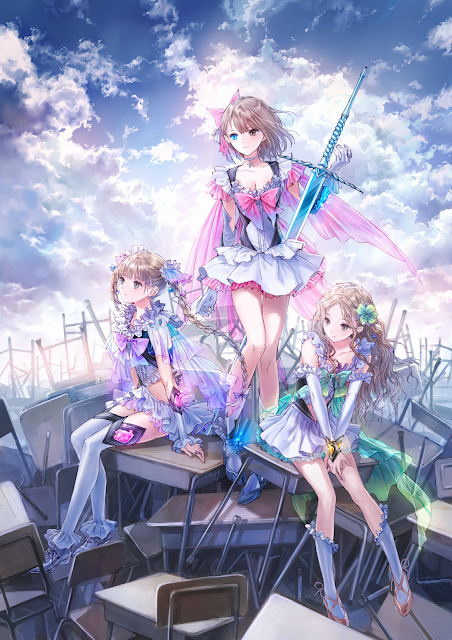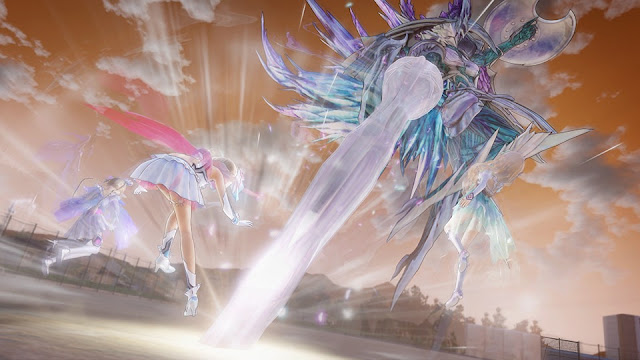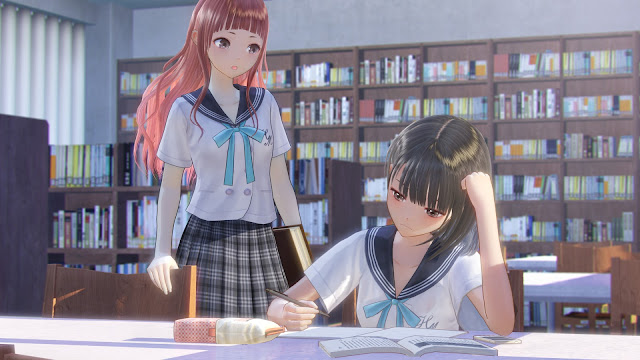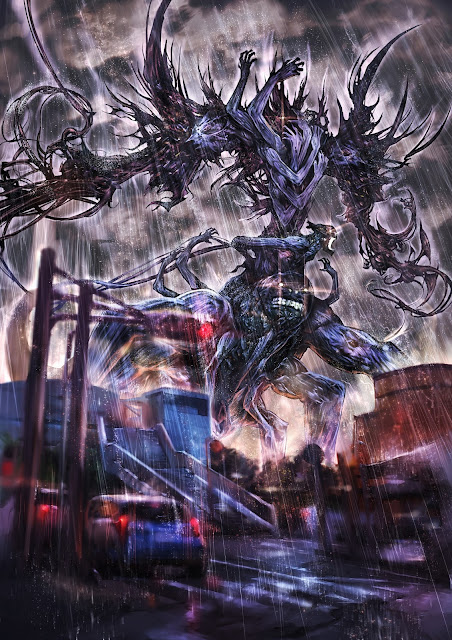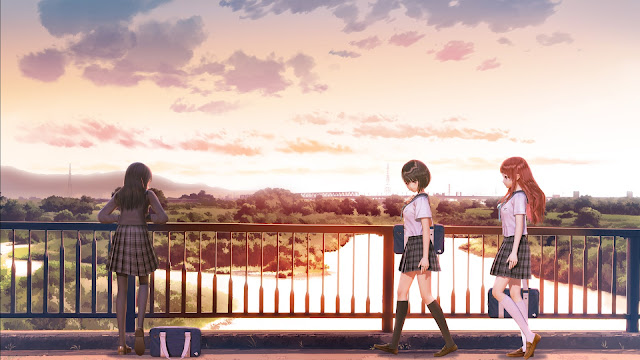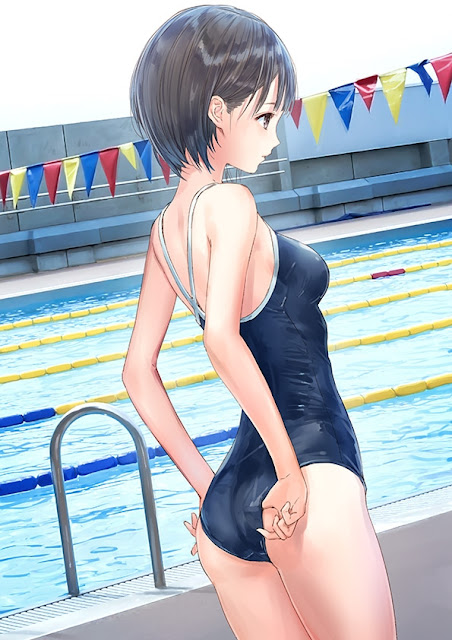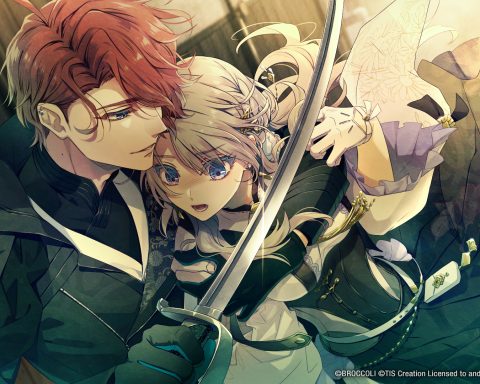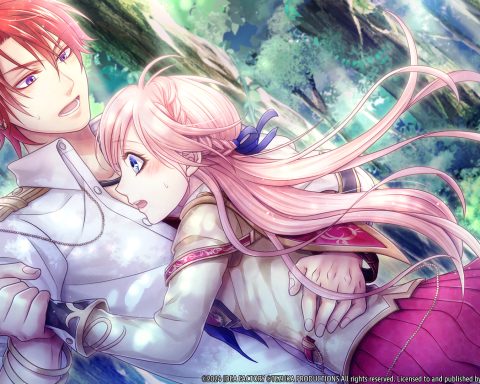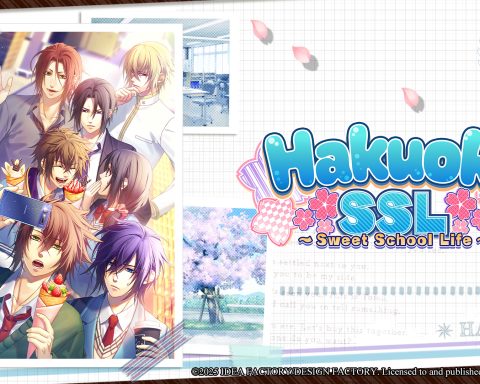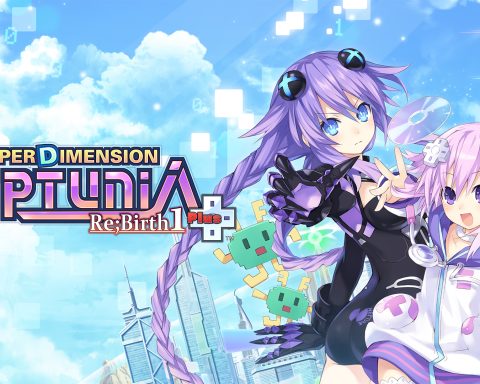Feature by Matt S.
Koei Tecmo’s JRPG subsidiary, Gust, has been my favourite developer for a number of years now. Final Fantasy, Persona, Yakuza and Fire Emblem might be all higher profile and higher budgeted JRPG franchises, and their respective developers have legions of fans around the world for good reason, but Gust’s approach to JRPGs has struck a chord with me from the point where I first discovered its leading franchise; Atelier.
I came to that particular series late – my first Atelier title was Atelier Rorona on the PlayStation 3 – and it was only really after Koei Tecmo acquired Gust in 2011 that the developer has been able to start building a presence in markets like Australia. While I may have discovered Gust late, there was a charm about Atelier Rorona that immediately hooked me in, and I quickly realised that what attracted me to Rorona was emblematic of what Gust itself has always stood for. From that point on I’ve loved everything that has come out of the studio.
Atelier Rorona was, first and foremost, overwhelmingly nice. The game has a near-complete focus on building positive energy through a cheery outlook and happy innocence through which the characters go about their lives. As with all JRPGs, personal development was a key theme, and Rorona was no different there, but where most JRPGs focus on that development through sheer adversity – whether that’s preventing world-ending events, or going on epic adventures – the focus on alchemy (or, more accurately, throwing a bunch of materials into a giant pot to make everything from bombs to healing salves) meant that Rorona’s tale could be a simple story of a girl’s growth into adulthood, her job, and her responsibilities as part of a community. There is combat, but it isn’t violent, and the enemies are cute rather than menacing. It’s a game of humour, colour, and vibrancy. It’s a game that focuses on female protagonists – another feature common to almost all Gust games – and while there’s the odd moment of fanservice, it’s never the overt raunch of Gust’s fellow niche JRPG factory (and frequent point of comparison), Compile Heart.
As I played more of the series I came to realise that the franchise universally follows the same structures as Atelier Rorona. Gust’s other games, of which in recent years we’ve had Ar Tonelico, Ar Nosurge and Nights of Azure, often tackle darker themes, but again, the common thread between them are the focus on beautiful female protagonists, the sense of humour, and the love of colour and vibrancy.
This year, Gust will release the first in what, one hopes, becomes another new franchise for the developer: Blue Reflection. I first saw Blue Reflection at Tokyo Game Show last year, where it was announced, but nothing about the game was shown off. It was simply a poster buried within Koei Tecmo’s giant booth. But I immediately knew I’d like the game, based on the beautiful, ethereal art style depicted on it. As more details around the game were announced in the subsequent months, my interest in it grew further, and then it was released in Japan. While I’ve tried to keep myself relatively ignorant of it, in anticipation of playing the game myself, from what I have seen I’m utterly sold on it being the pinnacle of Gust’s core strengths as a game developer.
Magical girls in school uniforms
Blue Reflection is a magical girl game. An obscenely popular genre of anime, manga, and games in Japan (and indeed one of the oldest genres, having been around since the 1950s), and one that’s been steadily growing in stature in the west, the magical girl genre is characterised by featuring women almost exclusively as the protagonists, and these women have access to magical powers that allow them to go on adventures that normal people would otherwise find impossible (as the genre name suggests). Sailor Moon, which just about everyone should know of, even if they have never watched it, is perhaps the most famous example of the magical girl genre.
Blue Reflection builds on that tradition by meshing it with the slice of life genre – a type of anime and manga that depicts people living their day-to-day lives and the relationships they share with the people between them. According to Junzo Hosoi, the producer of Blue Reflection, this mix is not entirely unusual, but the development team have approached their attempt at it in such a way that they hope gives it a unique flavour.
“In Japan, the magical girl genre has expanded and branched off into areas from serious to ‘slice of life’ stories, and to hero-themed stories, so I think it is a theme that works across a variety of genres,” Hosoi said. “The common concept across all of these stories though is that the main character is a girl, and the activities of the girl are the subject for each piece of work.
“Where Blue Reflection is different is that there aren’t many magical girl works where the characters are illustrated in realistic proportions, and there aren’t many games that have detailed the lives of the magical girls, so I hope audiences will respond to these different aspects positively.”
This desire to reflect the day-to-day lives of the girls, as a juxtaposition against their magic abilities and adventures, was what ultimately led the development team to decide that something as mundane as a school was the right setting for the game. From there, it was obvious enough that school-aged protagonists were the right way to deliver the game’s themes, Hosoi added.
“A theme to the story we wanted to illustrate was that of accepting yourself. During the adolescent years, many people have fears of the unknown, being alone, superiority complexes and other strong emotions, but we wanted to show the process of accepting yourself for who you are,” Hosoi said.
“Some may conclude that there is no need to change yourself, whilst others may conclude that there is need to make changes to yourself. I believe that either outcome is fine, and that everyone has the freedom to make his/her own choice, but being able to accept yourself in a positive light, despite any shortcomings, is important.”
So, as with the Atelier series, Blue Reflection will be a game that is, ultimately, about positivity and personal growth. It might be about magical girls in a “real world” setting, where Atelier is about a fantasy setting and a distinctly unmagical skill within that world’s context – alchemy – but the core, bright, themes – and utterly beautiful protagonists – cross over between the two completely.
Beautiful girls, beautiful art
These themes are compelling enough that Hosoi said the development team was not overly concerned with Blue Reflection being yet another 2017 JRPG set in a school context. We’ve had an inundation of JRPGs with this kind of setting already this year, and some of them have been well received and/or unique and boundary pushing – Persona 5, The Caligula Effect, Tokyo Xanadu – but Hosoi said that an additional layer of nostalgia that was being built into the game would help to distinguish it from the other titles.
“To allow players to identify closely with the characters, we used a school for the story’s setting as they can think back on, and recall, their own experiences growing up. I’m confident that this game has a different charm to other titles,” Hosoi said.
Helping to create that sense of nostalgia is the absolutely breathtaking art direction in Blue Reflection. Look through screenshots, or the game in motion, and a couple of things become clear pretty quickly; the gorgeous character models, yes, but also a use of soft, gentle, and warm colours within each screen and scene that imbues the environments with an elegant, airy atmosphere. Blue is the colour of serenity, calmness, sadness and aloofness – all moods and tones that are often associated with nostalgia. In Blue Reflection, there’s a wistfulness to the way that environments are typically tinted blue, or incorporate blue motifs to catch the eye, that helps to encourage that nostalgic response within players.
According to Hosoi, the cohesion in the art, and the way it emphasises and reinforces the game’s themes, occurs because the game was built around its art.
One of the other delightful things about Gust as a creative force is that it’s a developer willing to give youthful talent a break; the creative leads on many projects are often young and relatively inexperienced, and this means that the projects often have that element of risk to them; they are being led by people that are still finding their voice and sense of creativity, and are experimenting with ideas and looking to create something fundamentally different. They take risks, such as creating a game with a heavy emphasis on soft, blue-hued art, when that softness also means the game risks being overlooked for the far more bold colour palettes that dominate most other games – particularly in the JRPG genre. Put Blue Reflection – be it screenshots, promo art, or character design, next to the equivalent in Persona 5 and where one is simply screaming for attention, Blue Reflection is instead asking for study and appreciation.
The lead artist responsible for this approach actually further deepens the link between Blue Reflection and Atelier Rorona, as he was the principle artist on both games; Mel Kishida. To hear Hosoi talk about the development process behind Blue Reflection, so much of it was structured around Kishida’s ideas, art and design (and he also acted as a supervisor on the project). And yet while Kishida has been working professionally in manga and anime for well over a decade, he is only 33 years old, and aside from the Arland series, he’s not been in a senior, leading role in game development previously.
“The idea for Blue Reflection began when we were deciding how we could incorporate the atmosphere, and subtle hues, of Mel Kishida’s illustrations into a new game,” Hosoi said. “We had decided on the art direction from the beginning, during the concept stages, with Kishida. We created the game to capture the delicate soft tones of Kishida’s illustrations, combined with inspiration from the distinct atmosphere and tones from Japanese films, bringing to life the characteristics of this game.”
The benefit to Blue Reflection in giving so much control over the tone of the game to an artist that has only had limited involvement in videogames previously is that the end result was always going to be fundamentally different and unique, even within the context of Gust’s own games. Whether this art direction resonates enough to equal commercial success or not remains to be seen, but ask an Atelier fan who his/her favourite characters are across the entire franchise, and one of the three girls from the Arland series – Rorona, Totori or Meruru – is more likely to come up than not. Kishida’s art is enough to drive home the appeal of a work, so my bet’s on Blue Reflection also finding itself an audience on the strength of its visual design.
But did we need to see their panties, and did they need to fight monsters?
One thing that is different in Blue Reflection, when compared against previous Gust games, is the extent of the fanservice – the light (though not explicit) sexualisation of the characters. The developer has generally had fanservice or sexual themes in its games, be that DLC swimsuit costumes (all Atelier games), gameplay mechanics that involve taking clothes off to gain power (the Ar Tonelico/ Ar Nosurge), or homosexual themes with plenty of innuendo (Nights of Azure), but Blue Reflection seems to really ratchet things up, with plenty of underwear flashes, bath scenes, and the like. Beyond the likely criticism that will come from the more puritan elements of the games media, there’s also a genuine risk that Blue Reflection will fall afoul of national censorship boards, such as in Australia and New Zealand, that have traditionally held issue with games that combine sex themes with school settings.
Hosoi admits that Gust, and Koei Tecmo, are concerned with the response that Blue Reflection will receive around these themes, but also said that these themes are core to the game, and hopes that people – including those that will be initially resistant towards the sexual content – do look at it in the broader context of the narrative.
“We placed emphasis on illustrating a familiar adolescent life, so I think that it is important to not just focus on the good, clean parts, but other aspects as well. We are concerned about the perception, but I think that once players reach the ending, they will be moved by all parts of the game, including parts they may have thought were unnecessary,” Hosoi said.
With regards to questioning themes within Gust games, I’ve been fine with the fanservice, as I do think it has thematic value to the stories being told though these games, but I’ve always wondered on the need to have combat at all. A game like Nights of Azure just wouldn’t be the same without its combat, sure, but looking at the Atelier games, and the stories they tell, it has always struck me as a little tonally odd that these characters need to “fight” monsters at all. In the Atelier games combat has had a mechanical purpose; defeated enemies provide the protagonists with resources to use in the alchemy to brew up the items they need to complete missions for other townspeople. On that level it makes sense, but it would be relatively easy to simply change the method of obtaining these items if the developers wanted to remove combat from the game. Making players fight in battles always seemed a little arbitrary and at times at odds for a franchise that has been about living peaceably and happily.
I asked Hosoi about this in Blue Reflection, as it seemed to be a fairly similar case. As a magical girl story I can see the need for the occasional battle – after all, Sailor Moon sometimes needs to deal with some enemies, and what’s good for Sailor Moon is good for all magical girl stories; but did the game need regular combat of the frequency of a normal JRPG? This is especially the case when the other half of the game is meant to be a low-intensity, relationships-and-story driven slice of life narrative. I was concerned that traditional JRPG combat and systems might act to foil the type of experience that the game is otherwise driving towards.
Hosoi assured me that the combat was very carefully planned to thematically link with the rest of the game. “When we started to think about the contrast between real and unreal, we decided it was best to show it through an ordinary school setting. This was so players would be able to see the growth and connection between the girls, experiencing the burden of having to protect their precious every-day lives from enormous monsters that attack. The fusion of a slice of life and epic fantasy narrative allowed us to showcase the designs of the characters to their fullest,” Hosoi said.
“The battle elements allowed us to bring out the character’s appeal to the fullest extent. The emotional growth of the characters through the story does strengthen their allure, but it was visually lacking the depth that battles can portray. Through the inclusion of battles, we were able to visually show the growth of the characters through various movements and actions as they grow more powerful, ultimately conveying the growth and allure of the characters.”
Gust in a nutshell
Blue Reflection is going to be a reflection on everything that Gust, as a game developer, stands for. It doesn’t have the production value of some of the other JRPGs released this year, but it’s easy to see how it is playing to its strengths; with a masterful artist behind the design of the game, Blue Reflection is going to be a delightful coming of age story, mixed in with anime genres that focus on the positives in life.
Will it become a franchise? I certainly hope so… and so does Hosoi. “We are working hard to make it into a franchise, but in the end, it will depend solely on whether or not the players want a sequel,” Hosoi said. “We would be happy if we could gain such support.”
It’s probably not a game that has registered too must on your radar just yet, but with it being out at the end of September – just a few short months away now – it’s going to be a real highlight of the JRPG genre in the latter half of the year.
– Matt S.
Editor-in-Chief
Find me on Twitter: @digitallydownld
 |
| Please Support Me On Patreon!
|


